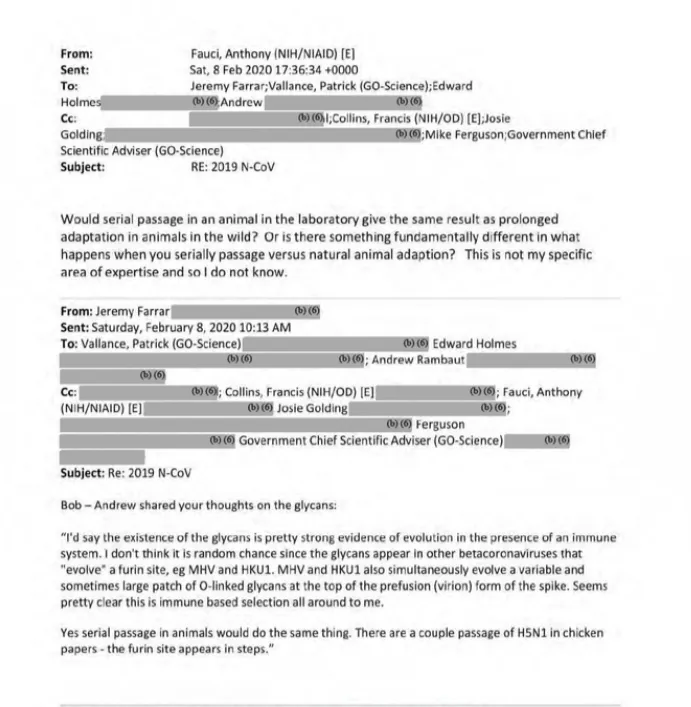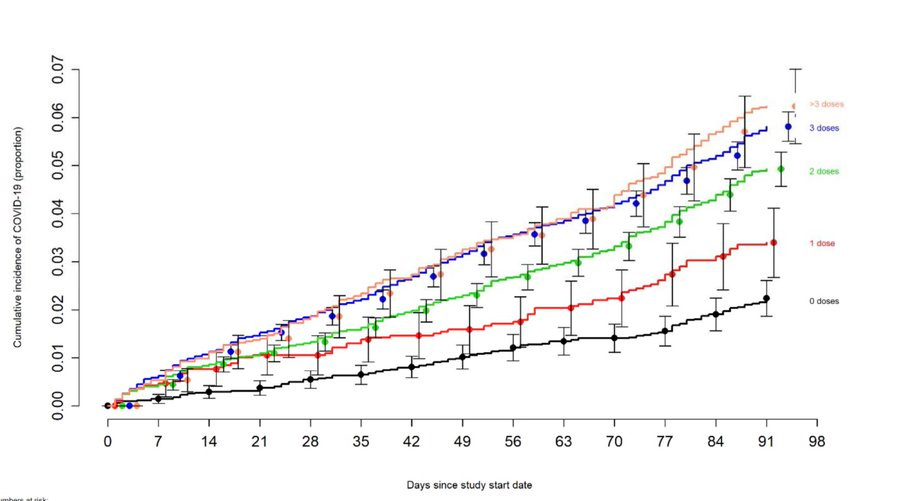
Moderators: Elvis, DrVolin, Jeff
“That’s what happened in the 70s, people were trying to do live-attenuated vaccines and do human challenge studies and that might be the way the H1 re-emerged in the 70s. Some people say it was a lab accident. I don’t believe that. I think it was actually human challenge studies and live-attenuated vaccines that reverted that are the likely candidates of the 1970 reemergence of H1. And we need to make sure that doesn’t happen again.”
The first person to take a serious look at the origins of the SARS2 virus was Yuri Deigin, a biotech entrepreneur in Russia and Canada. In a long and brilliant essay, he dissected the molecular biology of the SARS2 virus and raised, without endorsing, the possibility that it had been manipulated. The essay, published on April 22, 2020, provided a roadmap for anyone seeking to understand the virus’s origins. Deigin packed so much information and analysis into his essay that some have doubted it could be the work of a single individual and suggested some intelligence agency must have authored it.

“Since ADE in vitro has recently been described for human immunodeficiency virus type 1, current vaccination trials, particularly those aimed at raising an immune response against the [spike]-protein, should be reconsidered until more is known about the role of ADE in vivo.”[v]
“The postmortem examination showed that the vFS-immunized kittens had suffered from a form of FIP much more severe than naturally occurring FIP, even though no gross changes were observed. The presence of multiple lesions in several organs is atypical of naturally occurring FIP and indicates a rapid dissemination. The relatively small size of the lesions is probably due to the short incubation period.” [vii]


We still have a lot to learn about protection from COVID-19 vaccination, and in addition to a vaccine’s effectiveness it is important to examine whether multiple vaccine doses given over time may not be having the beneficial effect that is generally assumed.
Risk of COVID-19 increased with time since the most recent prior COVID-19 episode and with the number of vaccine doses previously received.

[T]hose who received fewer than 3 doses (>45% of individuals in the study) were not those ineligible to receive the vaccine, but those who chose not to follow the CDC’s recommendations on remaining updated with COVID-19 vaccination, and one could reasonably expect these individuals to have been more likely to have exhibited higher risk-taking behavior.
Despite this, their risk of acquiring COVID-19 was lower than those who received a larger number of prior vaccine doses. This is not the only study to find a possible association with more prior vaccine doses and higher risk of COVID-19. A large study found that those who had an Omicron variant infection after previously receiving three doses of vaccine had a higher risk of reinfection than those who had an Omicron variant infection after previously receiving two doses of vaccine.
Another study found that receipt of two or three doses of a mRNA vaccine following prior COVID-19 was associated with a higher risk of reinfection than receipt of a single dose. We still have a lot to learn about protection from COVID-19 vaccination, and in addition to a vaccine’s effectiveness it is important to examine whether multiple vaccine doses given over time may not be having the beneficial effect that is generally assumed.
In a series of studies supported by the National Institute of General Medical Sciences, the National Institute of Allergy and Infectious Diseases, the National Cancer Institute (NCI), and the National Center for Advancing Translational Sciences, researchers tested the effects of CBD and other cannabis compounds on SARS-CoV-2. They looked at interactions between CBD and the virus in human lung cells and in mice. They also analyzed data from the National COVID Cohort Collaborative’s health records of volunteers who had been prescribed the CBD-based medication to help prevent seizures.
What did they learn?
In both the laboratory studies and the health records analyses, CBD seemed to have a protective effect against SARS-CoV-2. When the virus was introduced to human lung cells treated with CBD, it could not replicate and take hold as it usually does. Mice that were given therapeutic doses of CBD before being exposed to the virus were much less likely to develop COVID-19 than mice in the control group. And human patients who took the CBD-based medication were less likely to report a COVID-19 diagnosis than others, including people who had the same seizure disorders but had not been prescribed that medication.
Interestingly, out of more than 100 compounds in cannabis, only CBD showed this protective effect. In fact, when CBD was combined with THC, its ability to protect decreased.
How Twitter Rigged the Covid Debate
The platform suppressed true information from doctors and public-health experts that was at odds with U.S. government policy.
By David Zweig
Monday, Dec 26, 2022
By the time reporter David Zweig got to the 10th floor conference room at Twitter Headquarters on Market Street in San Francisco, the story of the Twitter Files was already international news. Matt Taibbi, Michael Shellenberger, Leighton Woodhouse, Abigail Shrier, Lee Fang and I had revealed evidence of hidden blacklists of Twitter users; the way Twitter acted as a kind of FBI subsidiary; and how company executives rewrote the platform’s policies on the fly to accommodate political bias and pressure.
What we had yet to crack was the story of Covid.
David has spent three years reporting on Covid—specifically the underlying science, or lack thereof, behind many of our nation’s policies. For years he had noticed and criticized a bias not only in the mainstream media’s coverage of the pandemic, but also in the way it was presented on platforms like Twitter.
David has spent three years reporting on Covid—specifically the underlying science, or lack thereof, behind many of our nation’s policies. For years he had noticed and criticized a bias not only in the mainstream media’s coverage of the pandemic, but also in the way it was presented on platforms like Twitter.
We couldn’t think of anyone better to tackle this story. — BW
*****************
I had always thought a primary job of the press was to be skeptical of power—especially the power of the government. But during the Covid-19 pandemic, I and so many others found that the legacy media had shown itself to largely operate as a messaging platform for our public health institutions. Those institutions operated in near total lockstep, in part by purging internal dissidents and discrediting outside experts.
Twitter became an essential alternative. It was a place where those with public health expertise and perspectives at odds with official policy could air their views—and where curious citizens could find such information. This often included other countries’ responses to Covid that differed dramatically from our own.
But it quickly became clear that Twitter also seemed to promote content that reinforced the establishment narrative, and to suppress views and even scientific evidence that ran to the contrary.
....
Users browsing this forum: No registered users and 172 guests